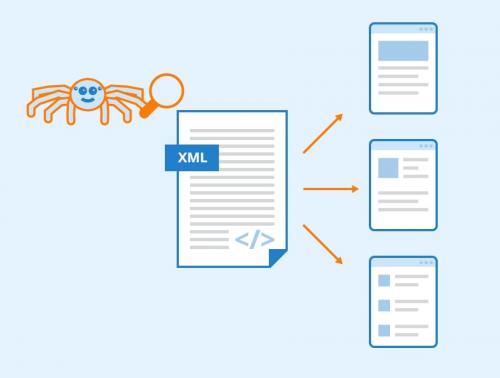Optimizing Your Site's Crawl Budget with XML Sitemaps
 Search engines like Google use web crawlers to discover and index new and updated pages on the internet. However, these crawlers have limited resources, known as the "crawl budget," which determines how often and how many pages on a website can be crawled. Maximizing your crawl budget is crucial for ensuring that your site's content is properly indexed and ranked by search engines. One effective way to optimize your crawl budget is by implementing XML sitemaps.
Search engines like Google use web crawlers to discover and index new and updated pages on the internet. However, these crawlers have limited resources, known as the "crawl budget," which determines how often and how many pages on a website can be crawled. Maximizing your crawl budget is crucial for ensuring that your site's content is properly indexed and ranked by search engines. One effective way to optimize your crawl budget is by implementing XML sitemaps.What are XML Sitemaps?
An XML sitemap is a file that provides search engines with a structured list of URLs on your website. It acts as a roadmap, guiding web crawlers to the most important pages and ensuring that they are discovered and indexed efficiently. By including your XML sitemap in your robots.txt file or submitting it directly to search engine webmaster tools, you can streamline the crawling process and improve your site's visibility in search results.
Benefits of Using XML Sitemaps:
- Improved Crawl Efficiency XML sitemaps help search engines understand the structure and hierarchy of your website, allowing them to prioritize the crawling of important pages. This ensures that the most valuable content is discovered and indexed first, maximizing the impact of your crawl budget.
- Inclusion of Non-Discoverable URLs Some pages on your website may not be easily discoverable by web crawlers due to factors like JavaScript rendering or lack of internal links. XML sitemaps provide a way to include these URLs, ensuring that they are not overlooked during the crawling process.
- Faster Content Discovery By submitting an XML sitemap, you are essentially providing search engines with a list of new and updated pages on your site. This accelerates the discovery and indexing of fresh content, which can lead to improved search rankings and increased visibility for your website.
- Control Over Crawl Frequency XML sitemaps allow you to specify the priority and update frequency of individual pages or groups of pages. This information helps search engines allocate their crawl budget more effectively, ensuring that high-priority pages are crawled more frequently than less important ones.
Creating and Submitting an XML Sitemap:
- Generate an XML Sitemap There are various tools and plugins available, both free and paid, that can help you generate an XML sitemap for your website. Some popular options include XML-Sitemaps.com, Yoast SEO (for WordPress sites), and online generators like XML-Sitemaps.com and XML-Sitemaps.com.
- Include Important Pages When creating your XML sitemap, be sure to include all the important pages on your website, such as your homepage, product or service pages, blog posts, and other valuable content. You can also include additional metadata like last modification dates and page priorities.
- Submit to Search Engines Once your XML sitemap is ready, you need to submit it to search engines. For Google, you can submit your sitemap through the Google Search Console. Other search engines, like Bing and Yahoo, have similar webmaster tools where you can submit your sitemap.
- Keep Your Sitemap Updated As your website grows and content is added or updated, remember to regenerate and resubmit your XML sitemap to ensure that search engines have the most up-to-date information about your site's structure and content.
By implementing XML sitemaps and following best practices, you can optimize your website's crawl budget and improve its visibility in search engine results. This, in turn, can lead to increased organic traffic, better user engagement, and potentially higher conversion rates for your business.
Advertise on APSense
This advertising space is available.
Post Your Ad Here
Post Your Ad Here
Comments